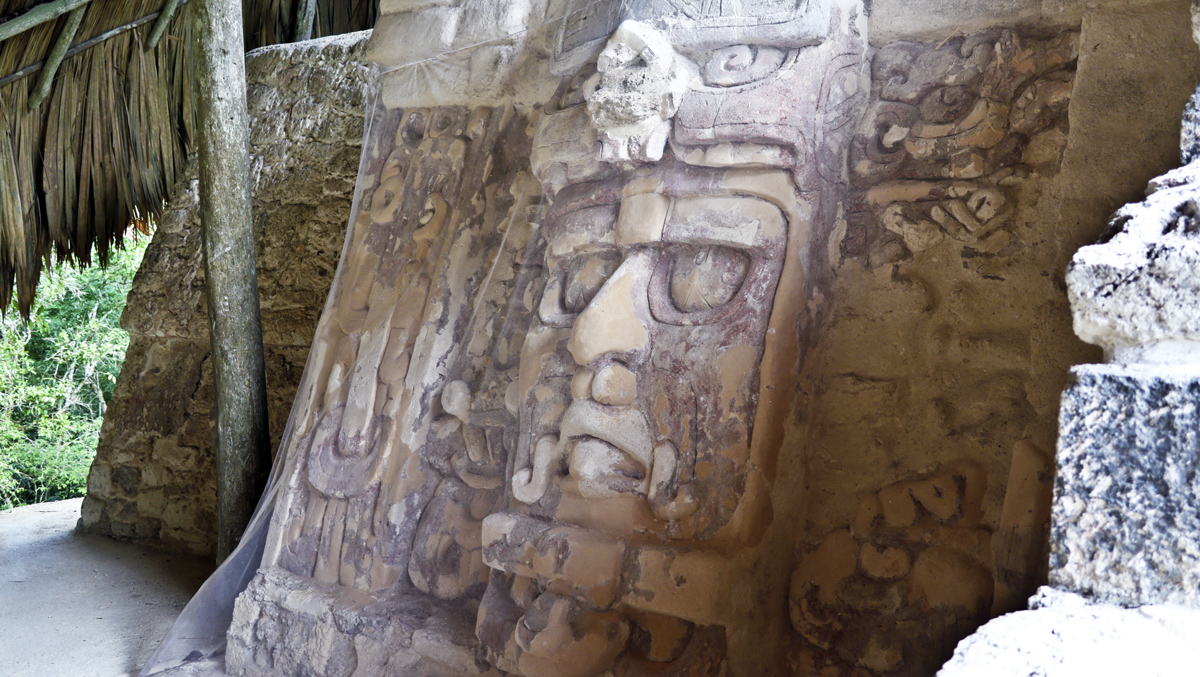
On the ball court where teams of Mayan athletes competed, the stakes must have been really high. At the end the losers—or in some versions of the story, the winners–were taken to the top of a temple to be sacrificed.
It’s a truly weird story but…really? Why would it make any sense to kill off your best and strongest? It’s most likely fake news, but we’ll never know for sure, because there isn’t much that’s easy to interpret in what’s left of what was obviously a great empire in Mexico and Central America.
Mayan sites always raise more questions than they answer and none are more head scratching than the lost city of Kohunlich.
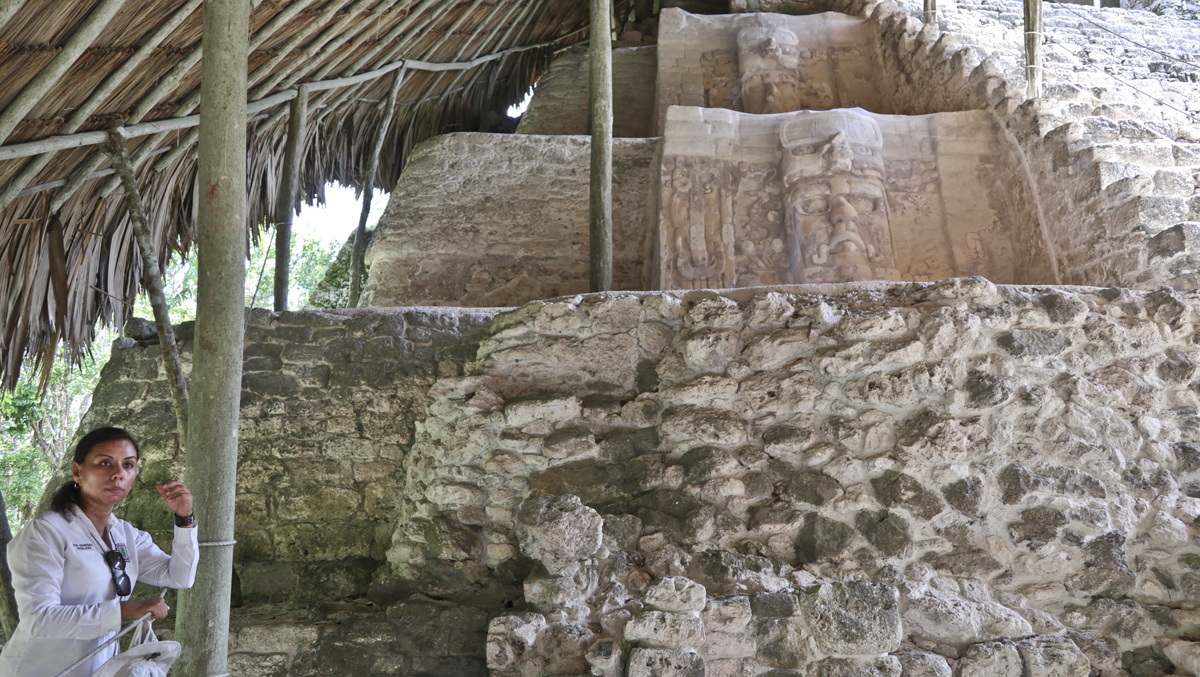
Did they deliberately forget?
To piece together some reality, we’re headed into the Mexican jungle on a day trip arranged by Princess Cruises in Mexico’s Costa Maya during a cruise on the Sky Princess from Florida. We’ve already visited the busy and well-known Mayan ruins of Chichen Itza during a stop in Cozumel. Today on a day docked at Costa Maya, in southern Mexico, a small group of us are getting a private tour to the ruins of the more recently discovered and still little-known ruins of Kohunlich, a two-hour drive from the coast.
Our guide tells us Kohnulich was lost for more than a thousand years and was only re-discovered by accident in 1912. Hold on…why didn’t anyone care to venture into the jungle for generations?
Maybe it was a case of being off the grid for centuries. Kohnulich was once a hub on the Mayan trading route, but today the location might just as well be called the middle of nowhere. There’s really nothing around it for miles. The jungle is so lush and overgrown with hanging vines you’d need machetes to cut through it if there wasn’t for one dirt path into the archeological area.
And it’s a beautiful walk, surrounded by greenery with the spooky calls of howler monkeys and the trills of some of the 700 species of birds native to the area in the trees.
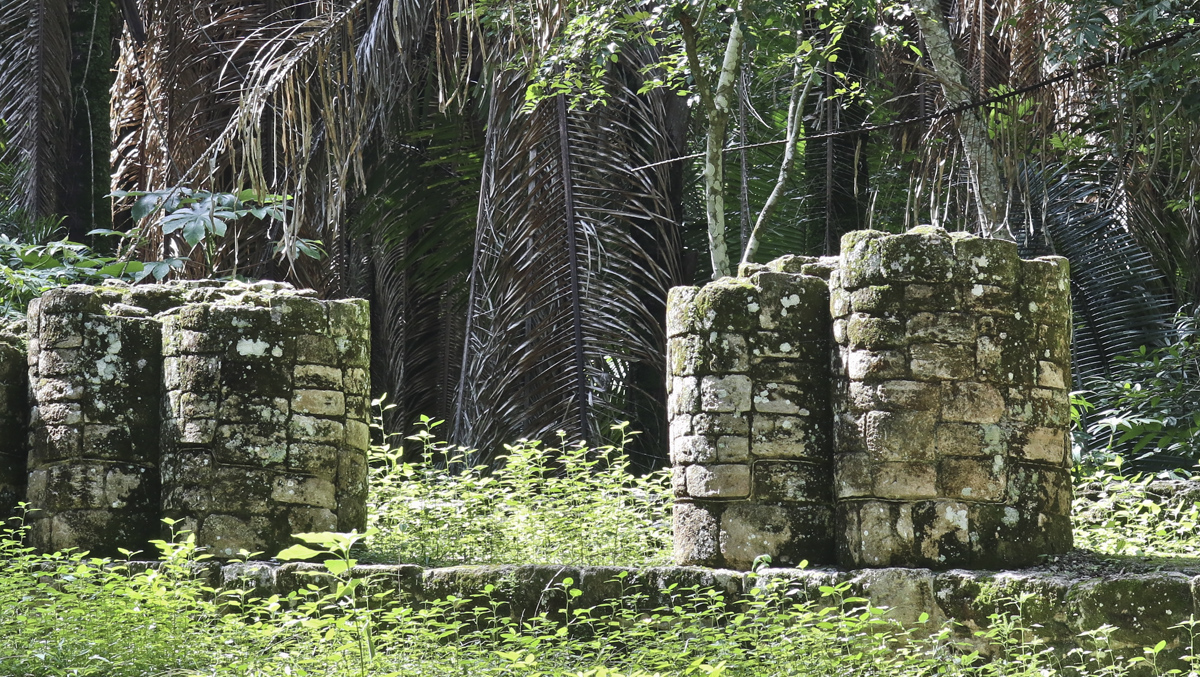
What we know—very little
It does almost seem that there was a deliberate attempt to forget the past. And that’s possible, because it shows up in the culture today. The guide says that while 7-million Mexicans still speak a Mayan dialect, the kids today don’t want to learn it in school, as it’s not considered as cool as modern Spanish–or English.
Kohunlich is believed to have reached its high point around 500 A.D., (about the same time the Angles and Saxons, and Scots and Picts were giving their names to islands off the coast of today’s European Union).
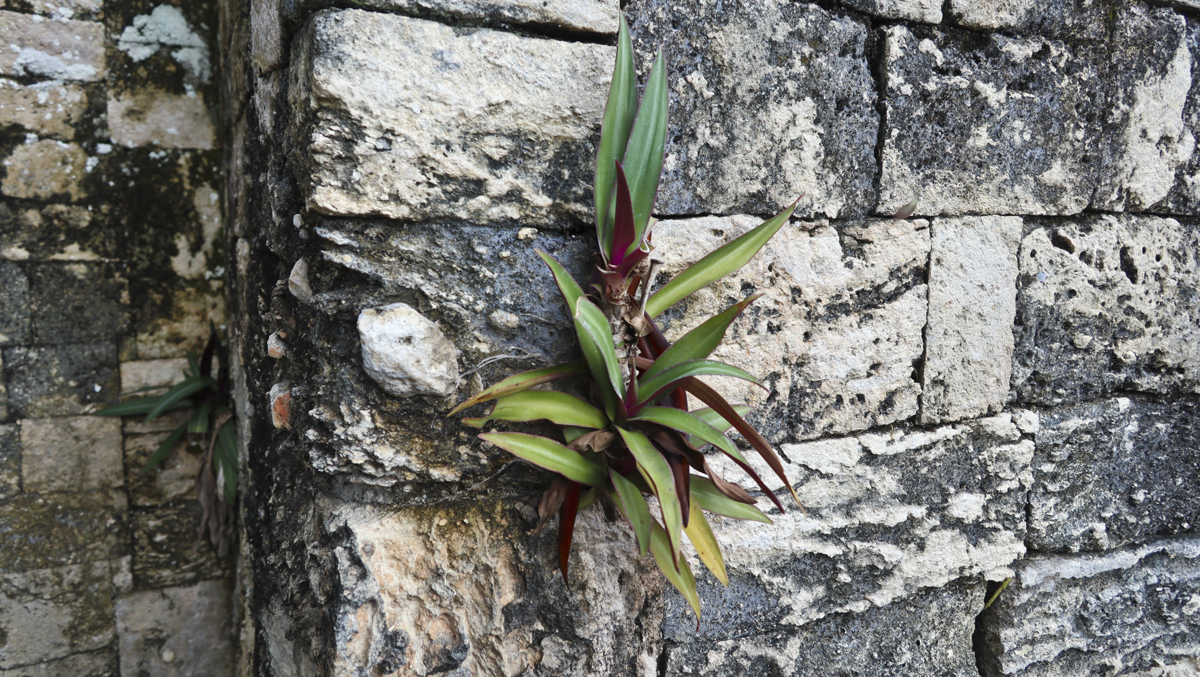
The city had an estimated population of 10,000, but judging from all the public buildings they built, it was likely much higher. Wooden structures have long since rotted away and there are said to be miles of stone ruins that have yet to be investigated. What can still be seen is dramatic, but enigmatic. Even groups who lived in teepees or caves seem to have left more clear records of their daily life and culture.
While they’re not believed to have developed metal tools or have used wheels for carting things around, seeing the structures they built suggests they were very technologically adept. They somehow managed to cart huge building blocks huge distances and shape and fit them so perfectly together that you can’t stick a knife blade between them. Let’s just say we may be wildly underestimating their skills and knowledge.
Archeologists suggest the city’s decline and disappearance wasn’t so much due to violent sports as conflict. Some suggest that building good roads connecting cities to encourage trade actually led to civil wars. One way or the other, Kohunlich appears to have become a ghost town by 900 A.D.
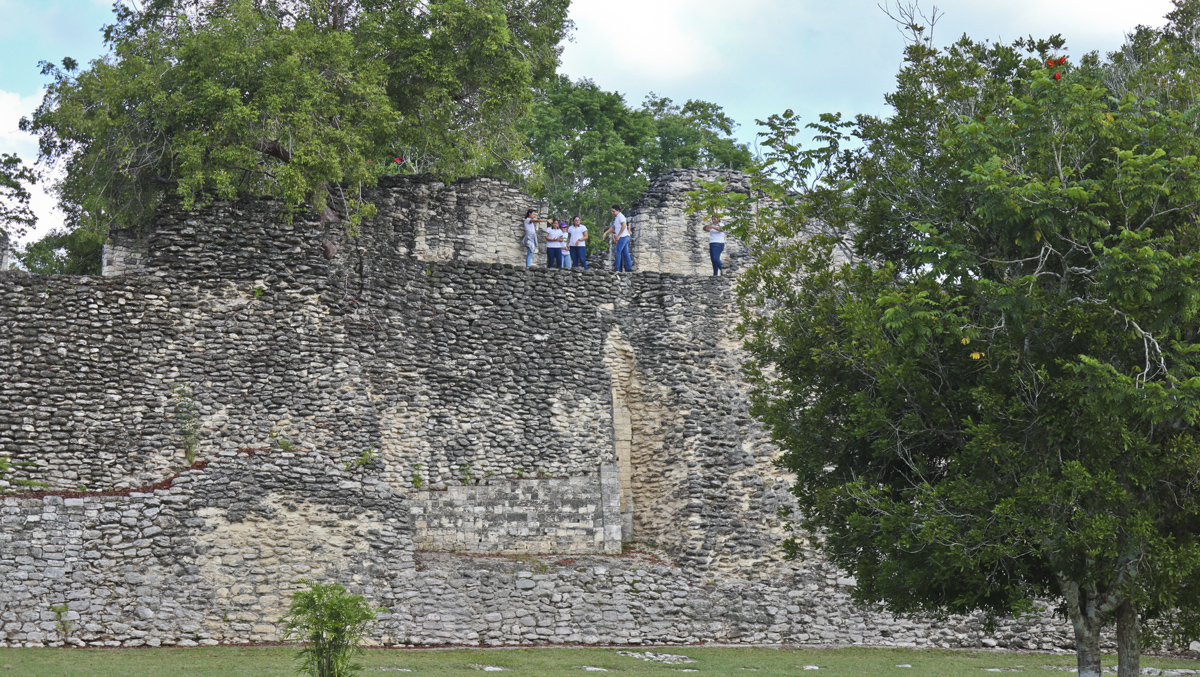
At least they built to last
There are enormous structures to explore. Sturdy walking shoes are a must, and climbing gloves are a good idea if you’re going to walk up the steep stairs to the tops of them.
The best of all is the Temple of the Masks, with its central staircase decorated by large carved faces that are 10 feet tall. You can get up close to them, but it’s a precarious climb up the steps on the sleek pyramid -shaped temple. The five sculpted heads are visible are protected by projections in the roof and are in good condition.
Unfortunately, several other big carvings that must have lined the walls appear to have been removed long ago–probably carted off by fortune hunters.
There are also a number of administrative and residential complexes that rose several stories high to explore. Some entrances feature rounded columns that seem vaguely Greek in style.
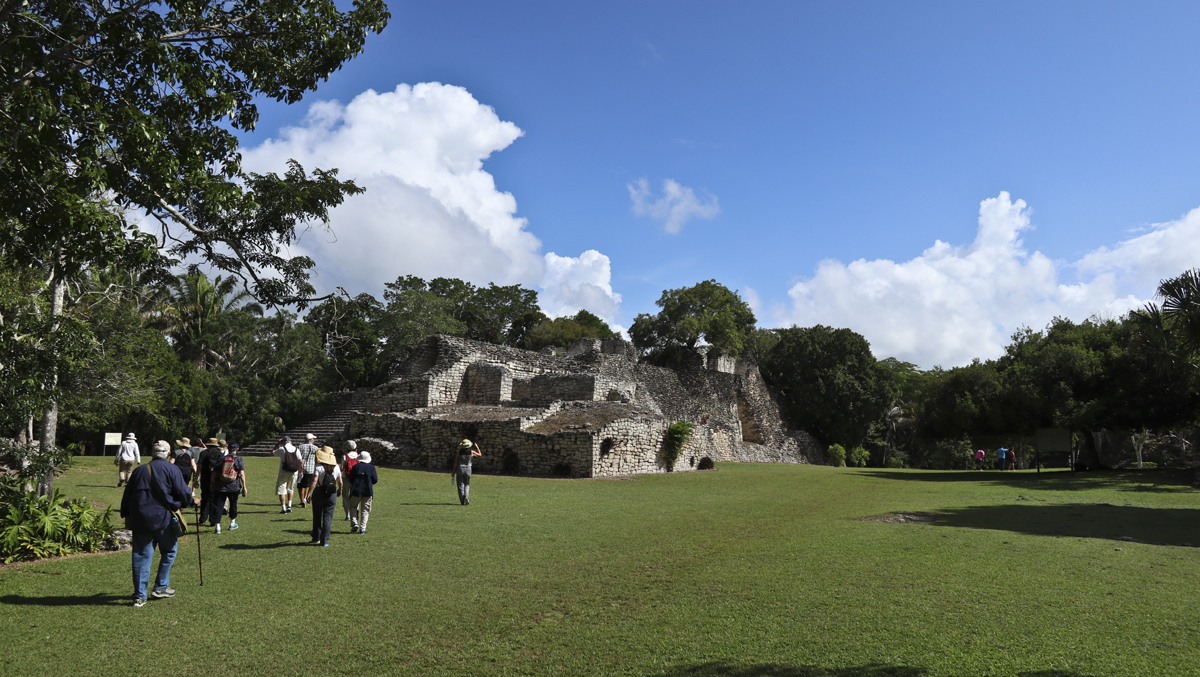
Let’s play ball
Then there’s the ball court. Most Mayan cities had similar playing fields with stone bleachers to watch the action. What little archaeologists have pieced together about the game suggest the playing zone was in the shape of a capital L and the object was to get a softball-sized ball into an end-zone goal without using hands. Think of a mix of baseball and soccer.
There might not have been much incentive to win a game, though, if the thrill of victory was really followed by a fast exit to immortality. Seems far-fetched but that could also be among the reasons the city eventually became a ghost town.
Someday, the story may become more clear. Meanwhile, with so much shade from the encroaching jungle, Kohunlich is an intriguing place to visit on a hot day and to ponder with a welcome cool one back on board the Sky Princess.
There’s definitely no sacrifice involved.
Story by Wallace Immen, The Cruisington Times


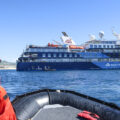

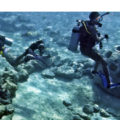
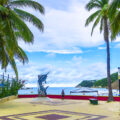
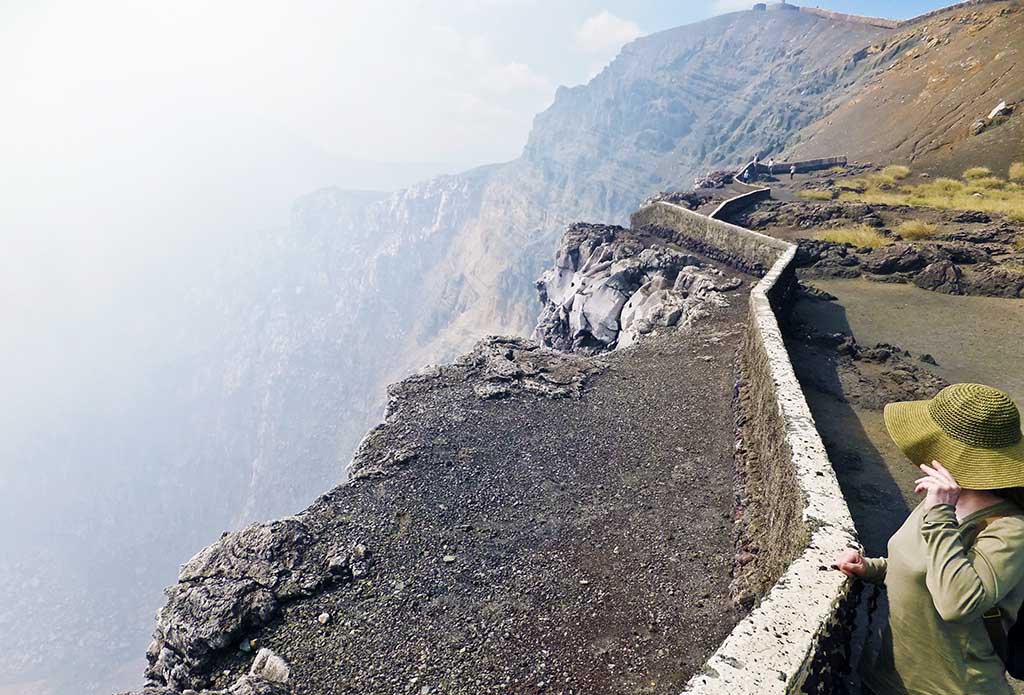
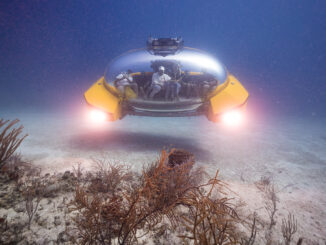

1 Trackback / Pingback
Comments are closed.